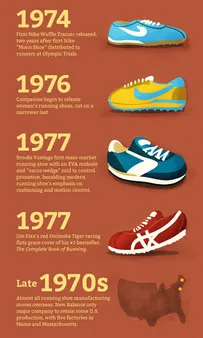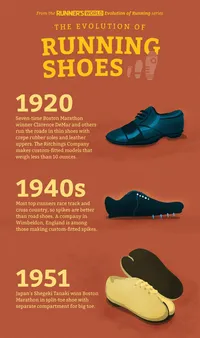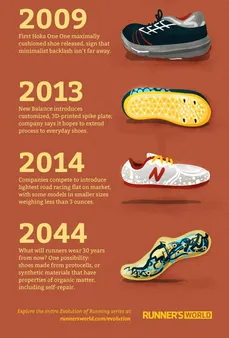Table of Contents
Throughout history, running has been an integral part of human existence, from the earliest hominids chasing prey to modern-day marathons. In this comprehensive guide on Kizworld, we'll delve into The history and evolution of running, tracing its journey from ancient origins to its current status as a global phenomenon. We'll explore the factors that have shaped its development, from competitive sports in ancient Greece to modern technological advancements. Whether you're a seasoned runner or simply curious about this timeless sport, this comprehensive exploration promises to captivate and inform.
The History and Evolution of Running: A Timeless Journey
I. The Origins of Running
The Origins of Running
Running is one of the oldest and most fundamental forms of human movement. From the earliest hominids who chased prey across the African savanna to the modern-day marathoners who push their bodies to the limit, running has been an integral part of human existence. In this section, we'll explore the origins of running and examine the factors that have shaped its development over the centuries.
The earliest evidence of running dates back to the Paleolithic era, around 2.6 million years ago. Fossil footprints discovered in Kenya suggest that early humans were capable of running long distances, possibly for hunting or gathering food. As humans evolved and spread across the globe, running became an essential skill for survival, helping them to escape predators, find food, and migrate to new territories. The history and evolution of gymnastics
In ancient Greece, running was highly valued as a form of physical fitness and athleticism. The Olympic Games, which began in 776 BC, featured a variety of running events, including the stadion (a short sprint), the diaulos (a longer sprint), and the dolichos (a long-distance race). Running was also an important part of military training, as soldiers needed to be able to march long distances and engage in combat.
During the Middle Ages, running declined in popularity as a competitive sport, but it remained an important form of transportation and recreation. People ran to get from place to place, to hunt and gather food, and to participate in festivals and other social events. The benefits of gymnastics for kids
The Renaissance and the Enlightenment saw a renewed interest in running as a form of exercise and recreation. In the 18th century, running clubs began to emerge in England, and by the 19th century, running had become a popular sport in many parts of the world. The first modern marathon, the Boston Marathon, was held in 1897, and the sport quickly gained popularity around the globe.
In the 20th century, running underwent a number of significant changes. The development of new training methods and technologies helped runners to improve their performance, and the sport became more accessible to people of all ages and abilities. Running also became a more popular form of recreation, as people began to recognize the many physical and mental benefits of the activity. The best gymnastics equipment for home use
Today, running is one of the most popular sports in the world. Millions of people participate in running events each year, and the sport continues to grow in popularity. Running is a great way to get exercise, improve your health, and challenge yourself both physically and mentally.
Name | Nationality | Major Accomplishments |
Emil Zátopek | Czechoslovakia | Won three gold medals at the 1952 Olympics |
Abebe Bikila | Ethiopia | Won the marathon at the 1960 and 1964 Olympics |
Joan Benoit | United States | Won the women's marathon at the 1984 Olympics |
Carl Lewis | United States | Won nine gold medals in track and field at the Olympics |
Michael Johnson | United States | Won four gold medals in track and field at the Olympics |
The history of running is a long and storied one, and the sport continues to evolve and grow in popularity. Whether you're a seasoned runner or just starting out, there's something for everyone in the world of running.
II. Running in Ancient Civilizations
Running in Ancient Civilizations
The Origins of Running
The origins of running as a form of exercise and sport can be traced back to ancient civilizations. The Egyptians, Greeks, and Romans all had a rich tradition of running, and it was often incorporated into religious ceremonies and festivals.
In ancient Egypt, running was seen as a way to honor the gods and was often included in religious rituals. The Greeks also believed that running was a way to honor the gods, and they held regular footraces as part of their religious festivals. In addition to these religious associations, running was also seen as a way to improve health and physical fitness.
- Egyptians: Saw running as a way to honor the gods.
- Greeks: Held regular footraces as part of their religious festivals.
- Romans: Used running as a way to train soldiers.
Running in the Military
In addition to its religious significance, running was also used as a way to train soldiers in ancient civilizations. The Romans, in particular, were known for their use of running as a military training tool. Roman soldiers were required to run long distances in full armor, and they were also trained in running drills and exercises.
For example, the Roman army used running as a way to improve the endurance and stamina of their soldiers.
Civilization | Use of Running |
|---|---|
Egyptians | Religious ceremonies and festivals |
Greeks | Religious festivals and to improve health and fitness |
Romans | Training soldiers and to improve endurance and stamina |
Running for Recreation
In addition to its religious and military significance, running was also enjoyed as a recreational activity in ancient civilizations. The Greeks, in particular, were known for their love of running, and they often held running races as part of their festivals. Running was also a popular activity among the Roman elite, who often had private running tracks built on their estates.
There are even records of running competitions being held in ancient Greece, with prizes awarded to the winners.
Benefits of Running
The benefits of running were well-known even in ancient times. Running was seen as a way to improve health and fitness, and it was also believed to be a way to improve mental health and well-being.
- Improve health and fitness
- Improve mental health and well-being
- Increase endurance and stamina
- Enhance cardiovascular health
- Strengthen muscles and bones
In addition, running was seen as a way to promote social interaction and community. Running events were often held as part of festivals and other social gatherings, and they provided an opportunity for people to come together and compete in a friendly environment.
Read more about the history of gymnastics
III. The Evolution of Running as a Sport
The Evolution of Running as a Sport
The evolution of running as a sport has been a fascinating journey, marked by significant milestones and cultural shifts. From its humble origins as a means of transportation and survival to its current status as a global phenomenon, running has undergone a remarkable transformation.
In ancient times, running was primarily a practical activity, used for hunting, gathering food, and escaping danger. As civilizations developed, running began to take on a more recreational and competitive nature. The ancient Greeks, for example, held footraces as part of their Olympic Games, and the Romans organized chariot races that drew large crowds.
- Related: The History and Evolution of Gymnastics
- Related: The History and Evolution of Martial Arts
- Related: The History and Evolution of Surfing
Event | Location | Year |
Ancient Olympic Games | Greece | 776 BC |
Boston Marathon | United States | 1897 |
New York City Marathon | United States | 1970 |
London Marathon | United Kingdom | 1981 |
The modern era of running began in the 19th century with the rise of organized track and field competitions. The first modern Olympic Games, held in 1896, included several running events, and the sport quickly gained popularity around the world.
In the 20th century, running experienced a surge in popularity, thanks in part to the efforts of influential figures such as Roger Bannister, who broke the four-minute mile barrier in 1954, and Emil Zátopek, who won three gold medals at the 1952 Olympics.
Today, running is one of the most popular sports in the world, with millions of people participating in races and recreational runs every year. The sport has also become a major industry, with billions of dollars spent on running shoes, clothing, and accessories.
The evolution of running as a sport is a testament to the human spirit's ability to push limits and achieve greatness. From its humble beginnings to its current status as a global phenomenon, running has captured the imagination of people from all walks of life.
IV. Running in the Modern World
Running in the Modern World
Running is more popular than ever before. In the past few decades, the number of people who run has increased dramatically. This is due in part to the growing awareness of the health benefits of running, as well as the increasing popularity of running events such as marathons and 5Ks. Additionally, the development of new technologies, such as GPS tracking devices and running apps, has made it easier for people to track their progress and stay motivated.
The increase in the popularity of running has led to a number of changes in the way that people run. For example, more people are now running for fun rather than competition. Additionally, more people are running in groups or clubs, which can help to make running more social and enjoyable. Finally, more people are using technology to track their progress and stay motivated.
Name | Features | Cost |
Strava | Tracks your runs, provides detailed insights, and allows you to connect with other runners | Free and premium versions available |
Runkeeper | Tracks your runs, provides feedback, and offers training plans | Free and premium versions available |
MapMyRun | Tracks your runs, provides detailed maps, and allows you to create routes | Free and premium versions available |
The future of running is bright. The sport is expected to continue to grow in popularity in the years to come. This is due to the many benefits that running offers, as well as the increasing availability of resources and support for runners.
As running continues to grow in popularity, we can expect to see even more innovation in the sport. This could include the development of new technologies that make running more accessible and enjoyable, as well as the creation of new running events and challenges. Additionally, we can expect to see more research on the health benefits of running, which could lead to even more people taking up the sport.
- Check out our article on how to start running for beginners.
- If you're looking for a challenge, try our list of the top running competitions and events.
- For more information on the benefits of running, read our article on the benefits of running.
V. Conclusion
Running has come a long way since its humble beginnings as a means of survival and transportation. Today, it is a global phenomenon, enjoyed by people of all ages and abilities. Whether you're a competitive runner, a recreational jogger, or someone who simply enjoys taking a walk, running is a great way to stay active, improve your health, and connect with others. As we look to the future, it's exciting to think about the new ways that running will continue to evolve and inspire people around the world.